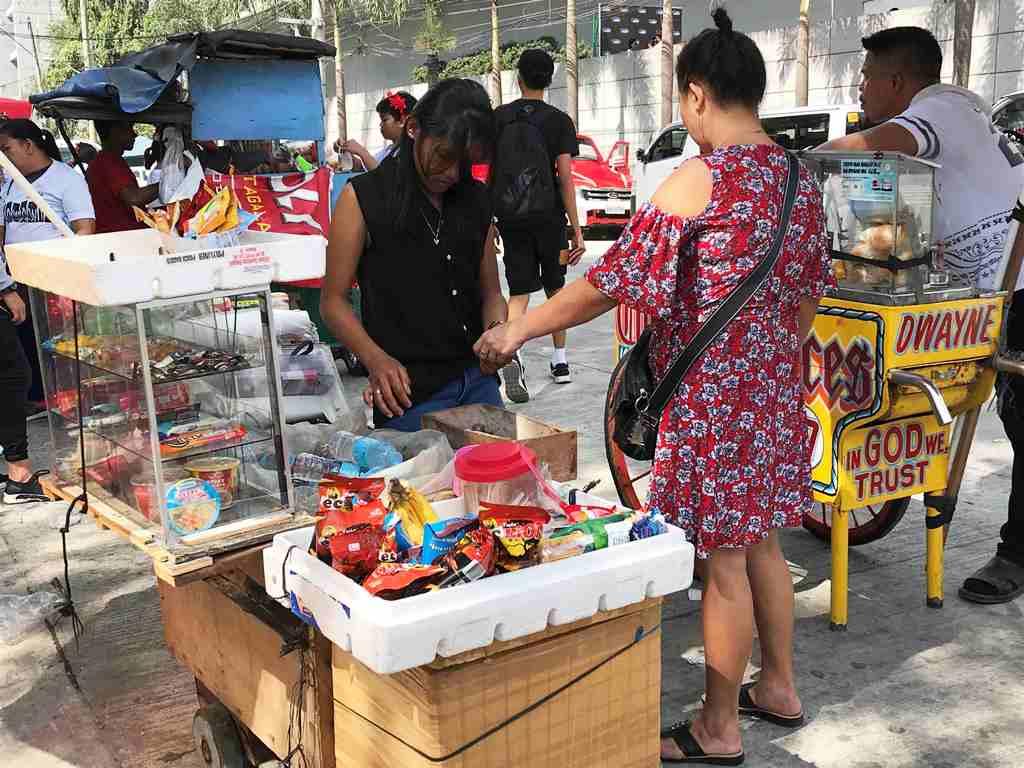Inflation quickens to 4.2% in January

Inflation recorded its fourth straight month of acceleration and quickened to its fastest level in two years amid the faster increase in the prices of food commodities during the month, the Philippine Statistics Authority said Friday.
Inflation refers to the rate of increase in the prices of goods and services such as food, electricity, transportation and clothing.
The PSA said inflation clocked in at 4.2% in January from 3.5% in December 2020. It is also faster than the 2.9% rate posted in January 2020.
This is the fastest inflation rate since January 2019 when it was recorded at 4.4%.
January’s inflation print also surpassed the Bangko Sentral ng Pilipinas’ (BSP) forecast range of 3.3% to 4.1%.
“Ang pangunahing dahilan ng pag-angat ng inflation sa buwan ng Enero 2021 ay ang mas mabilis na pagtaas ng presyo ng food and non-alcoholic beverages,” PSA chief and National Statistician Claire Dennis Mapa said at a virtual press conference.
The heavily-weighted food and non-alcoholic beverages index quickened to 6.2% last month, from 4.8% in December 2020.
Food and non-alcoholic beverages index contributed 59.6% in the overall inflation rate.
“Ito ay dahil sa pagtaas ng presyo ng karne, partikular ang baboy, na may mas mataas na inflation sa antas na 17.1% sa buwan ng Enero 2021,” Mapa said.
Sought for comment, Union Bank chief economist Ruben Carlo Asuncion said the January inflation was higher-than-expectations of 3.4%, which could be attributed to “huge impact of recent significant rise in meat prices.”
Likewise, Riza Commercial Banking Corp. chief economist Michael Ricafort said the recent increase in inflation to a two-year high is largely due supply-side factors such reduced supplies on storm damage and ASF on pork.
Last month, consumers saw meat prices, particularly pork, jack up as much as P400 per kilo in Metro Manila markets due to supply constraints as the African swine fever (ASF) decimated much of the hog population.
To arrest rising prices, which the Department of Agriculture blamed on unscrupulous traders and wholesalers who took advantage of the ASF situation, President Rodrigo Duterte issued an executive order imposing a 60-day price cap on pork and chicken in the National Capital Region (NCR).
Under the EO, the price of kasim and pigue should not exceed P270 per kilo. The President also fixed the price ceiling for liempo and dressed chicken at P300 and P160, respectively.
“Ang isa pang dahilan ay ang pagtaas ng presyo ng gulay, gaya kamatis, sa antas na 21.2%. Ang presyo ng prutas, gaya ng saging at mangga, ay tumaas din sa bilis na 9.0%,” Mapa said.
The higher annual increments in the index of transport at 8.6% also contributed to the uptrend in the country’s overall inflation rate.
“Ito ay dahil sa mas mabagal na pagbaba sa presyo ng petroleum and fuels na may inflation na -9.3%, mula sa -10.6% noong buwan ng Disyembre 2020,” the PSA chief said.
Major contributors to the increase in transportation index are tricycle fare at 46.&%, jeepney fare at 6.4%, and bus fare at 4.5%.
“Naging mas mabagal din ang pagbaba ng presyo sa domestic air fare na may inflation na -3.4% sa buwan ng Enero 2021, mula sa -8.9% noong Disyembre 2020,” Mapa said.
The restaurant and miscellaneous goods and services index at 3.0% rate is the third contributor in the overall inflation print in January.
The faster inflation for the index resulted from the faster increases in meals at 2.9%, articles for personal hygiene at 2.9%, and barbershop services at 9.2%
Meanwhile, inflation decelerated in the indices of alcoholic beverages and tobacco at 11.7%, and furnishing, household equipment and routine maintenance of the house at 2.9%.
In addition, faster annual increases were recorded in the indices of the following food groups:
- Corn, 1.6%
- Other cereals, flour, cereal preparation, bread, pasta and other bakery products, 2.1%
- Fish 3.7%
- Oils and fats, 2.9%
- Fruits, 9.0%
Meanwhile, inflation was slower in the indices of sugar, jam, honey, chocolate and confectionery at 0.3%, and food products not elsewhere classified at 3.2%.
The indices of rice; milk, cheese, and egg retained their corresponding previous month’s annual rates of 0.1% and 1.7%, respectively.
Inflation in NCR, outside Metro Manila
By geographical area, inflation in NCR rose to 4.3% in January 2021, from 3.2% in December 2020. Inflation in the area in January 2020 was posted at 2.7%.
The PSA said the 8.3% annual growth in food and non-alcoholic beverages index primarily pushed up the inflation in Metro Manila.
In addition, the annual rate of housing, water, electricity, gas, and other fuels index picked up by 0.4% during the month, from an annual decline of -0.6% in December 2020.
Higher double-digit annual hikes were also observed in the indices of alcoholic beverages and tobacco at 10.5% and transport at 11.3%.
The rest of the commodity groups either had slower annual increases or retained their previous month’s annual rates, except for recreation and culture whose annual rate declined further by -0.5%, according to the PSA.
Similar to the trend in Metro Manila, inflation in areas outside NCR (AONRC) also went up further to 4.2% from 3.7% in December 2020. It also compares with the 3.0% posted in January 2020.
The highest inflation among the regions in AONCR during the month remained in Region II or Cagayan Valley at 8.0%, while the lowest was recorded in Region IX or Zamboanga Peninsula at 0.2%.
Inflation for bottom 30%
The inflation felt by the bottom 30% income households accelerated further to 4.9% in January, from 4.3% in December 2020 and 2.3% in January 2020.
This was the highest inflation recorded since February 2019 when it clocked in at 4.3%.
Similar to the overall inflation rate, the rate of increase in prices felt by the bottom 30% was due to higher annual increase in the index of the heavily-weighted food and non-alcoholic beverages. — RSJ, GMA News




